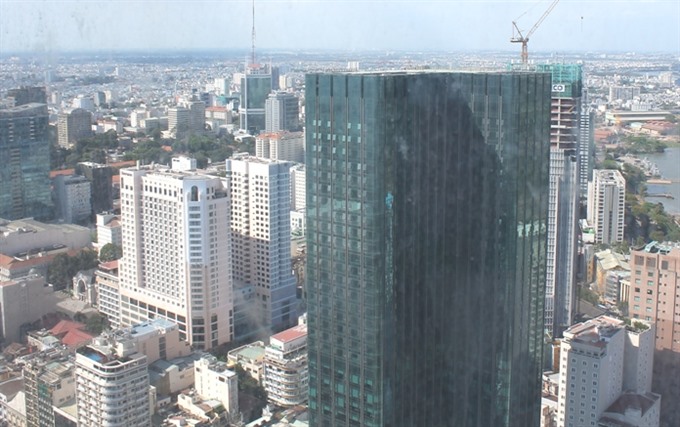 Society
Society

HCM City authorities have submitted a new housing plan to the city’s People’s Council to ensure that new housing projects follow plans designed to improve city landscapes and residents’ quality of life.
 |
| A number of high-rise buildings have been built in HCM City without adequate infrastructure in the area, worsening traffic congestion in the inner city. — Photo tphcm.chinhphu.vn |
HCM CITY — HCM City authorities have submitted a new housing plan to the city People’s Council to ensure that new housing projects follow plans designed to improve city landscapes and residents’quality of life.
In recent years, a number of high-rise apartment projects that received licenses ended up worsening traffic and affecting urban planning, especially in inner districts where population is dense and roads are narrow, acccording to the city People’Committee.
In addition, a number of residential slums still exist in the city centre, according to city authorities.
Under the new proposal, new housing must be developed in line with infrastructure plans for new roads, parks, hospitals, schools and shopping malls.
Low-rise housing will also be gradually transformed to high-rise housing to ensure efficient use of land that could be used to build new roads, parks and parking spaces.
Ninety per cent of all new housing projects would be high-rises.
From now to 2020, districts will organise bids to select investors for high-rise apartment projects along major roads in six districts, including districts 2, 7, 9, 12, Thủ Đức and Bình Tân.
These projects will replace old and degraded housing areas.
The city will also strictly manage the transfer of land and houses, as well as publicise all housing information to ensure transparency.
The main administrative centres will continue to be located in the inner city, but other areas of the city will also function as administrative centres as well.
In addition, the city plans to encourage low-cost commercial, rental and social housing in a bid to limit the construction of illegal housing in suburban areas. These projects would be eligible for preferential loans.
No new apartment buildings in inner city
In the inner districts such as District 1 and 3, priority will be given to renovating and replacing existing old apartments built before 1975. No new high-rise residential housing projects will be allowed until 2020.
In 11 urban districts (districts 4, 5, 6, 8, 10, 11, Tân Bình, Tân Phú, Phú Nhuận, Gò Vấp and Bình Thạnh), the city will limit the number of high-rise apartment projects unless there are plans for technical infrastructure.
Similarly, in these 11 urban districts, priority will be given to renovating and replacing existing apartments built before 1975.
In five suburban districts (Củ Chi, Hóc Môn, Bình Chánh, Nhà Bè and Cần Giờ), priority will be given to projects in new residential areas, especially ecotourism projects.
Development of new residential areas in the five districts will help reduce population density in the inner city.
The city has set a target of 19.8 square metres of housing per capita by 2020, and 22.8 square metres per capita by 2025.
More than 39 million square metres of additional floor space will be needed in the 2016-20 period, and nearly 46 million square metres in the 2021-25 period.
Land for urbanisation will be an additional 1,504ha by 2020 and 1,704ha by 2025.
The city is also expected to need 20 million square metres of social housing by 2025.
For social housing, more than VNĐ316 trillion (US$13.7 billion) of investment capital is needed now, and VNĐ370 trillion by 2025, according to city authorities.
Recently, PM Nguyễn Xuân Phúc told HCM City and Hà Nội to stop developing high-rise apartment buildings in inner city areas.
Instead, the cities must develop satellite towns to redistribute the population and workforce, helping to reduce the burden on housing, traffic and employment. — VNS




